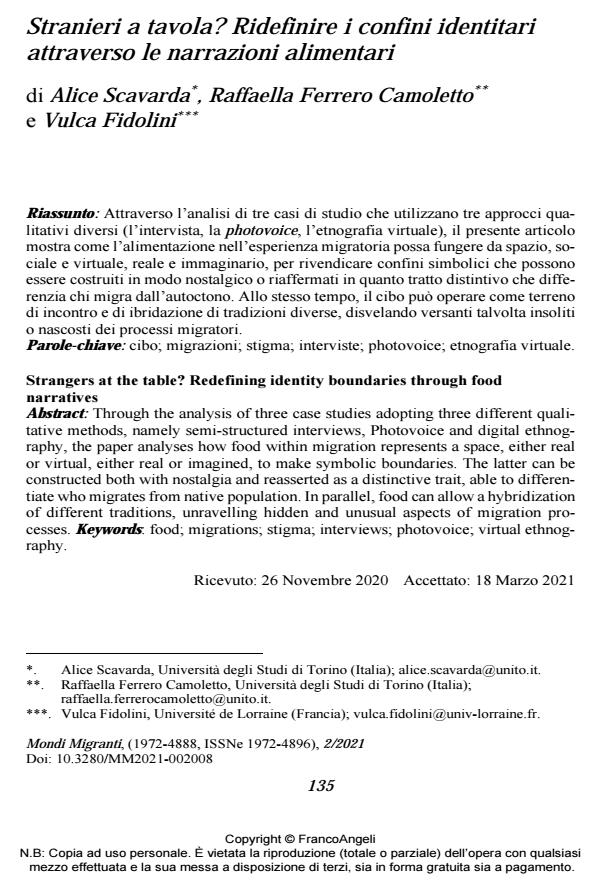Strangers at the table? Redefining identity boundaries through food narratives
Journal title MONDI MIGRANTI
Author/s Alice Scavarda, Raffaella Ferrero Camoletto, Vulca Fidolini
Publishing Year 2021 Issue 2021/2
Language Italian Pages 14 P. 135-148 File size 187 KB
DOI 10.3280/MM2021-002008
DOI is like a bar code for intellectual property: to have more infomation
click here
Below, you can see the article first page
If you want to buy this article in PDF format, you can do it, following the instructions to buy download credits

FrancoAngeli is member of Publishers International Linking Association, Inc (PILA), a not-for-profit association which run the CrossRef service enabling links to and from online scholarly content.
Through the analysis of three case studies adopting three different qualitative methods, namely semi-structured interviews, Photovoice and digital ethnography, the paper analyses how food within migration represents a space, either real or virtual, either real or imagined, to make symbolic boundaries. The latter can be con-structed both with nostalgia and reasserted as a distinctive trait, able to differenti-ate who migrates from native population. In parallel, food can allow a hybridiza-tion of different traditions, unravelling hidden and unusual aspects of migration processes.
Keywords: food; migrations; stigma; interviews; photovoice; virtual ethnography
Alice Scavarda, Raffaella Ferrero Camoletto, Vulca Fidolini, Stranieri a tavola? Ridefinire i confini identitari attraverso le narrazioni alimentari in "MONDI MIGRANTI" 2/2021, pp 135-148, DOI: 10.3280/MM2021-002008